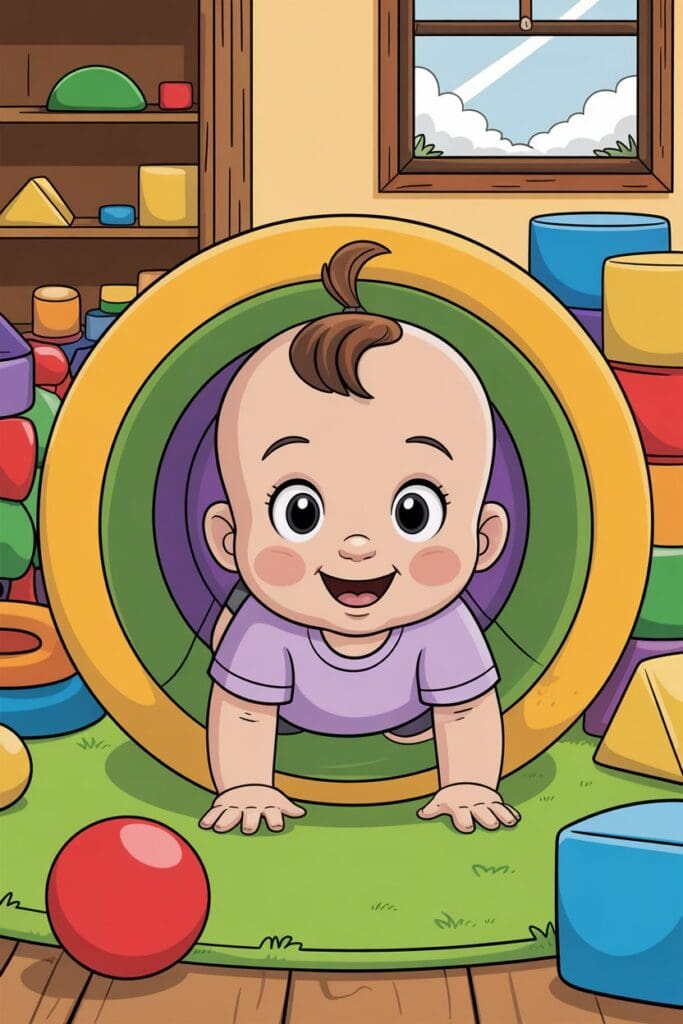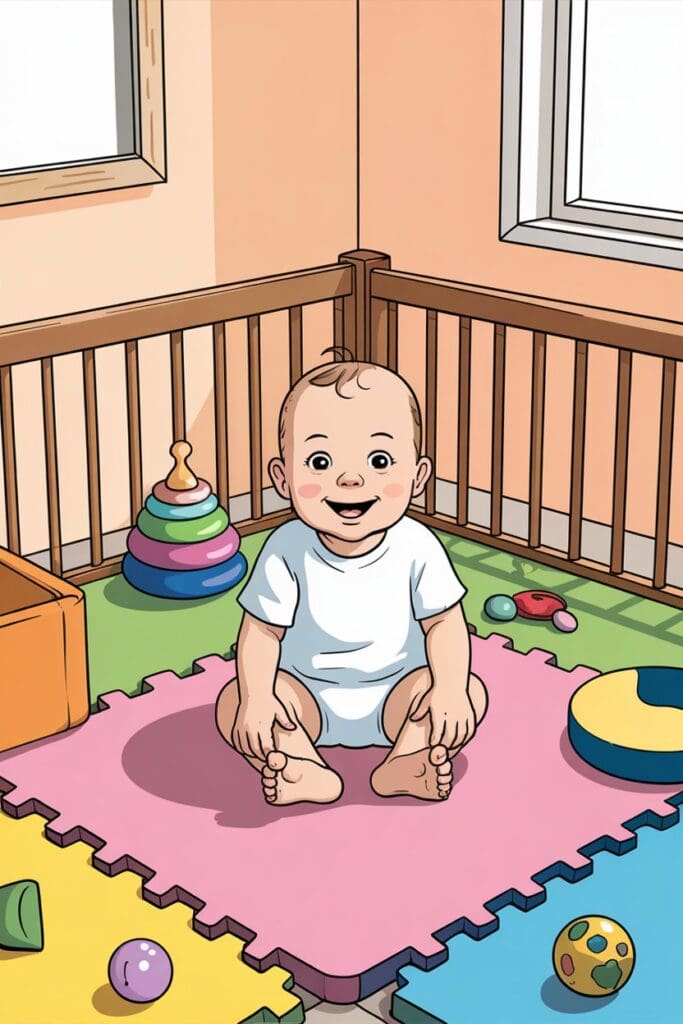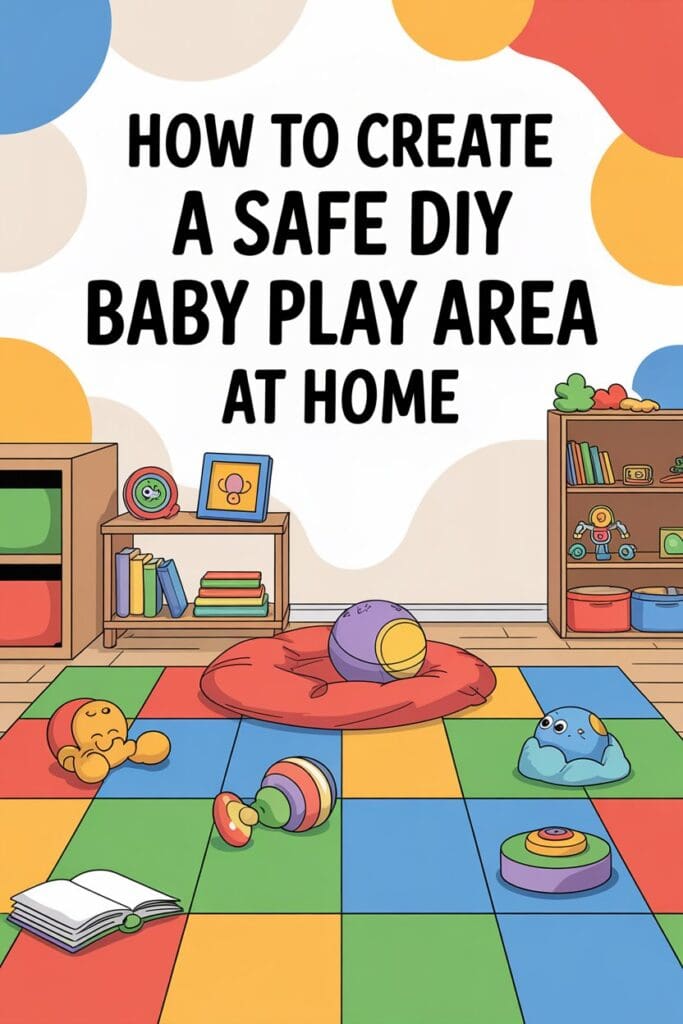10 DIY Baby Play Area Ideas to Create a Safe and Fun Space at Home
Setting up a baby play area at home doesn’t have to be expensive or complicated. In fact, with a few smart choices, you can create a cozy, safe, and stimulating environment right in your living room or nursery.
A DIY baby play area at home gives your little one freedom to explore while offering you peace of mind. Let’s walk through exactly how to design the perfect setup — no fancy playrooms required!
Heads up: This post may include affiliate links. As an Amazon Associate, I earn from qualifying purchases—at no extra cost to you. Full privacy policy and disclosure here.

Why Create a Baby Play Area?
A dedicated baby play area is more than just a fun spot for toys — it supports your child’s development in so many ways:
- Encourages Independent Play: Babies learn to explore on their own.
- Strengthens Motor Skills: Rolling, crawling, and reaching happens safely.
- Provides a Safe Space: Baby-proofed zones reduce hazards.
- Boosts Sensory Development: Tactile, auditory, and visual stimulation are key in early learning.
With a DIY baby play area at home, you can create a nurturing environment tailored to your child’s growth stages.
Creating a DIY baby play area at home is one of the best ways to give your little one a space to explore safely.

What to Include in a DIY Baby Play Area at Home
1. Soft, Padded Flooring
Crawlers and early walkers need a cushioned surface:
- Foam play mats
- Interlocking tiles
- Thick area rugs
- Foldable gym mats
Make sure your choice is non-toxic, easy to clean, and thick enough to protect from bumps.
2. Baby-Proofed Boundaries
Use:
- Playpen gates
- Low shelving
- Room dividers
Keeping the area contained helps both with safety and with maintaining a visual “play zone” for your baby.
These DIY baby play area at home ideas will help you maximize small spaces while supporting your baby’s development.
3. Age-Appropriate Toys
Rotate a small selection of toys every week or two to keep things fresh. Some great options include:
- Soft blocks
- Musical toys
- Stacking rings
- Mirror toys
- Sensory balls
Tip: Less is more! A clutter-free play area invites deeper engagement.
4. A Comfortable Spot for You
Add a cozy floor cushion or small chair nearby so you can supervise comfortably while your baby plays independently.
How to Set Up Your DIY Baby Play Area Step-by-Step
Step 1: Choose the Right Location
Pick a spot where:
- You can supervise easily
- Lighting is natural and soothing
- Distractions are minimal (avoid near TV noise)
Popular choices include a corner of the living room, a large hallway, or even part of the nursery.
Step 2: Baby-Proof the Space
- Cover outlets
- Anchor heavy furniture
- Remove choking hazards
- Secure cords and blinds out of reach
Baby-proofing is the foundation of a great DIY baby play area at home.
Step 3: Lay Down Safe Flooring
Create a soft base layer using padded mats or rugs. Make sure edges are secure to prevent tripping.
Step 4: Set Up Zones
Organize the play area into small “zones,” such as:
- Soft toys zone
- Movement zone (space for crawling or a mini tunnel)
- Sensory zone (textures, lights, mirrors)
Zoning adds variety and keeps your baby exploring longer.
If you’re also preparing for outings, don’t miss this diaper bag essentials checklist for newborns.
Step 5: Add Developmental Toys and Activities
Think simple, open-ended toys that encourage curiosity and problem-solving.
Rotate toys every week or so to maintain interest and challenge new skills.
Tips to Maximize Safety in Your Baby Play Area
- Check toys regularly for loose parts.
- Clean mats and toys weekly.
- Avoid heavy shelves or unstable furniture near the play area.
- Never leave baby unsupervised for long periods, even in a gated space.
The goal of your DIY baby play area at home is freedom within boundaries — safe exploration you can feel confident about.

How to Make Your Baby Play Area Stimulating and Fun
After playtime, bond with your little one through these fun newborn play ideas.
1. Sensory Baskets
Fill small baskets with items of different textures — crinkly paper, silicone kitchen tools, soft fabrics — and let your baby explore!
2. Visual Interest
Hang colorful art prints, baby-safe mirrors, or black-and-white pattern cards on the walls.
3. Movement Opportunities
Encourage crawling and pulling up with:
- Low, sturdy furniture
- Cushioned obstacles like small tunnels or foam steps
4. Play with Light
Soft string lights (out of reach) or baby-safe light projectors add visual magic during early evening play sessions.
FAQs: DIY Baby Play Area at Home
At what age should I create a DIY baby play area?
You can start creating a play area as early as 3–4 months! Early setups focus on tummy time mats and visual stimulation, evolving into crawling zones around 6–9 months.
How big should a baby play area be?
There’s no perfect size. A space as small as 5×5 feet can work for newborns and young infants. As your baby starts crawling and walking, a bigger zone with more movement space becomes ideal.
What is the best flooring for a baby play area?
Non-toxic foam mats are the best choice for most families — they offer cushioning, easy cleanup, and versatility. Area rugs layered over carpet are another good option for low-budget setups.
How can I keep the play area organized?
Use low bins, baskets, or small shelves to store toys and rotate only a few at a time. This prevents overstimulation and keeps cleanup easy!
Do I need to separate the baby play area from adult spaces?
Not necessarily. Many families incorporate the DIY baby play area at home into a corner of the living room or shared space. Using a distinct mat color, baby gate, or furniture placement creates a visual boundary without needing a separate room.
Final Thoughts: DIY Baby Play Area at Home
Creating a DIY baby play area at home is one of the best gifts you can give your little one.
It’s not about expensive gear or picture-perfect Instagram setups — it’s about making a safe, engaging space where your baby can learn, move, and thrive at their own pace.
With a little creativity and a lot of love, you can design a beautiful baby play zone — all on your own. 💛👶
For more ideas on creating safe spaces for babies, check out this American Academy of Pediatrics guide to baby-proofing and play safety.

